Abstract
Nitrite reductase has been separated from cell-free extracts of Nitrosomonas and partially purified from hydroxylamine oxidase by polyacrylamide-gel electrophoresis. In its oxidized state the enzyme, which did not contain haem, had an extinction maximum at 590nm, which was abolished on reduction. Sodium diethyldithiocarbamate was a potent inhibitor of nitrite reductase. Enzyme activity was stimulated 2.5-fold when remixed with hydroxylamine oxidase, but was unaffected by mammalian cytochrome c. The enzyme also exhibited a low hydroxylamine-dependent nitrite reductase activity. The results suggest that this enzyme is similar to the copper-containing `denitrifying enzyme' of Pseudomonas denitrificans. A dithionite-reduced, 465nm-absorbing haemoprotein was associated with homogeneous preparations of hydroxylamine oxidase. The band at 465nm maximum was not reduced during the oxidation of hydroxylamine although the extinction was abolished on addition of hydroxylamine, NO2− or CO. These last-named compounds when added to the oxidized enzyme precluded the appearance of the 465nm-absorption band on addition of dithionite. Several properties of 465nm-absorbing haemoprotein are described.
Full text
PDF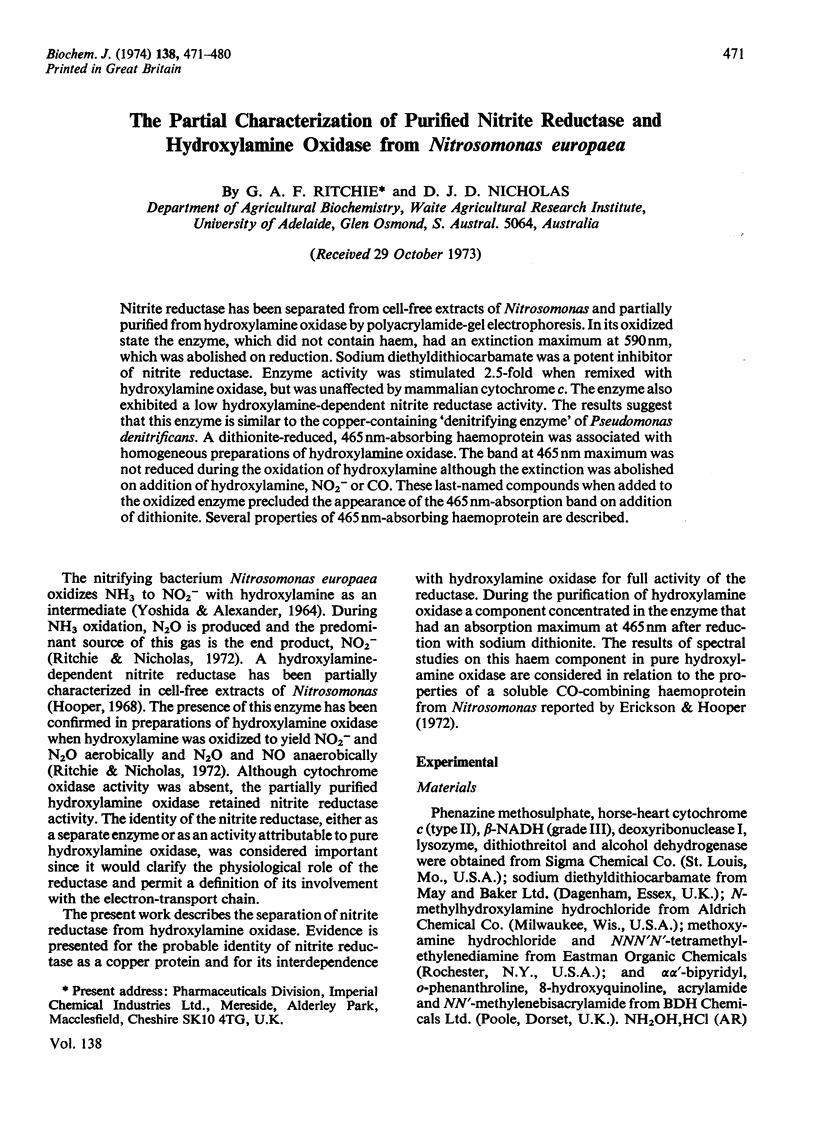
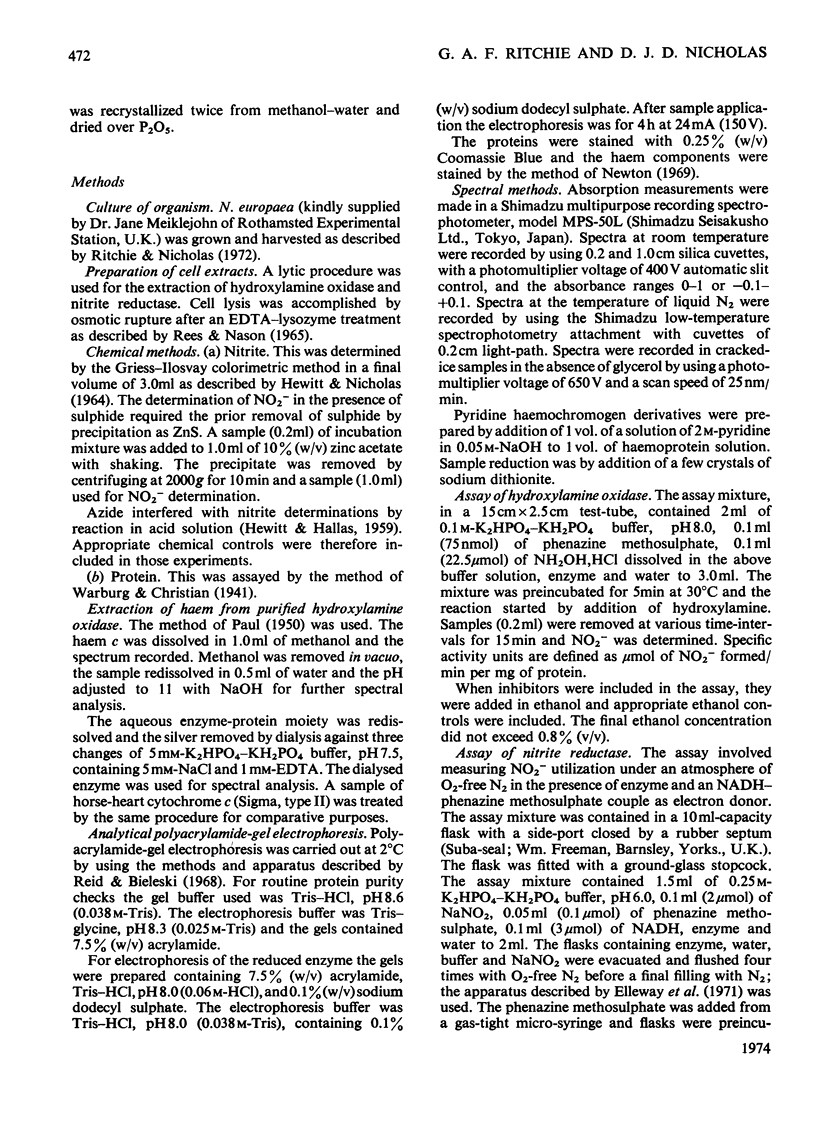
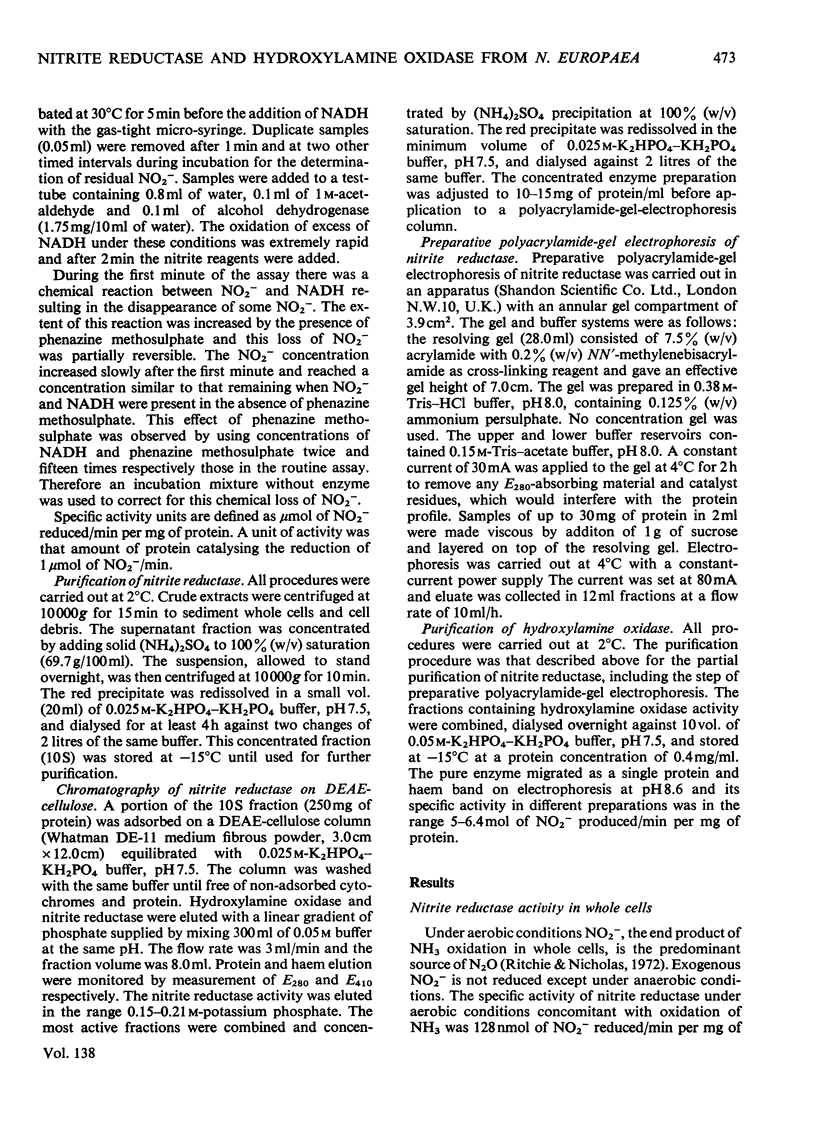
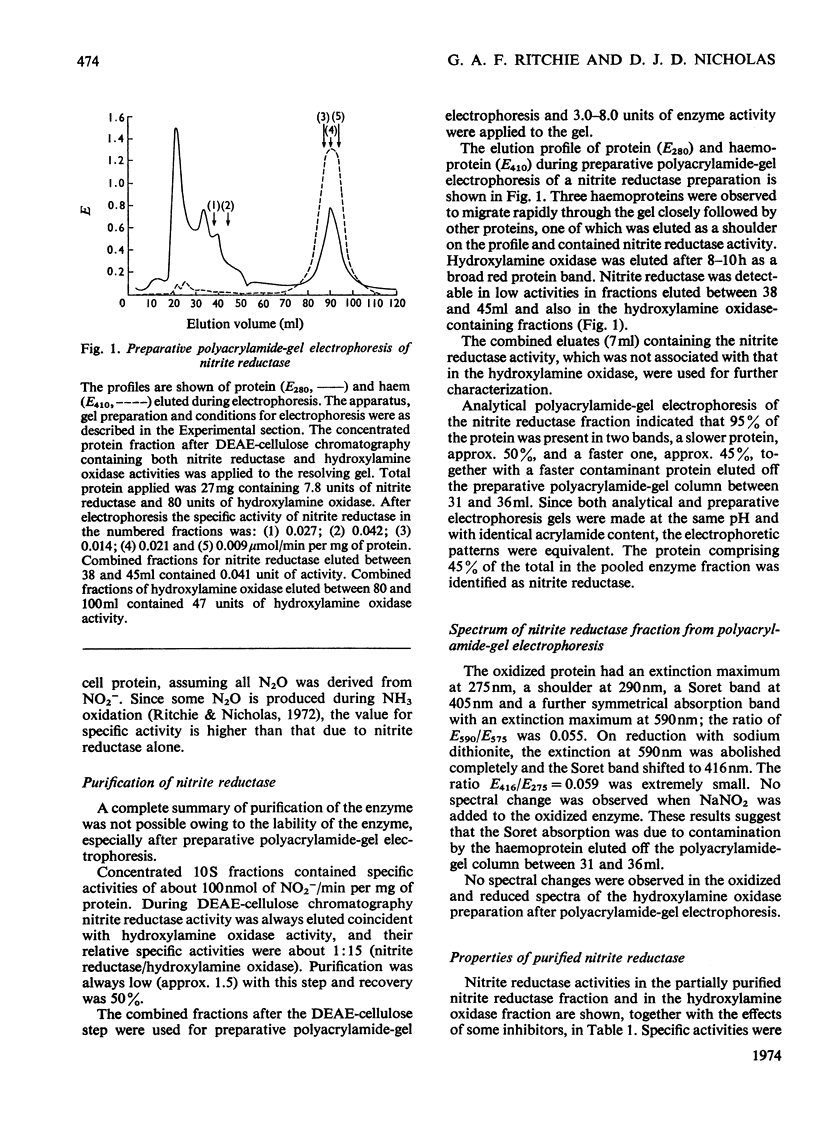
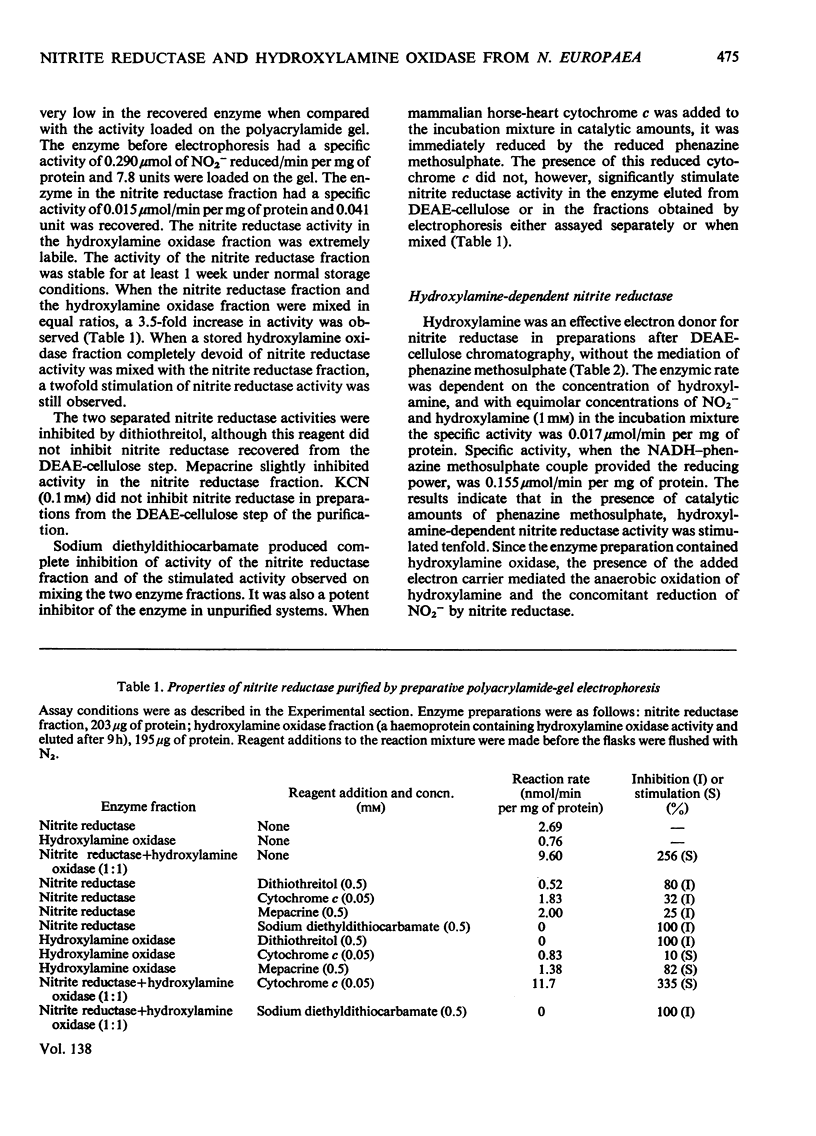
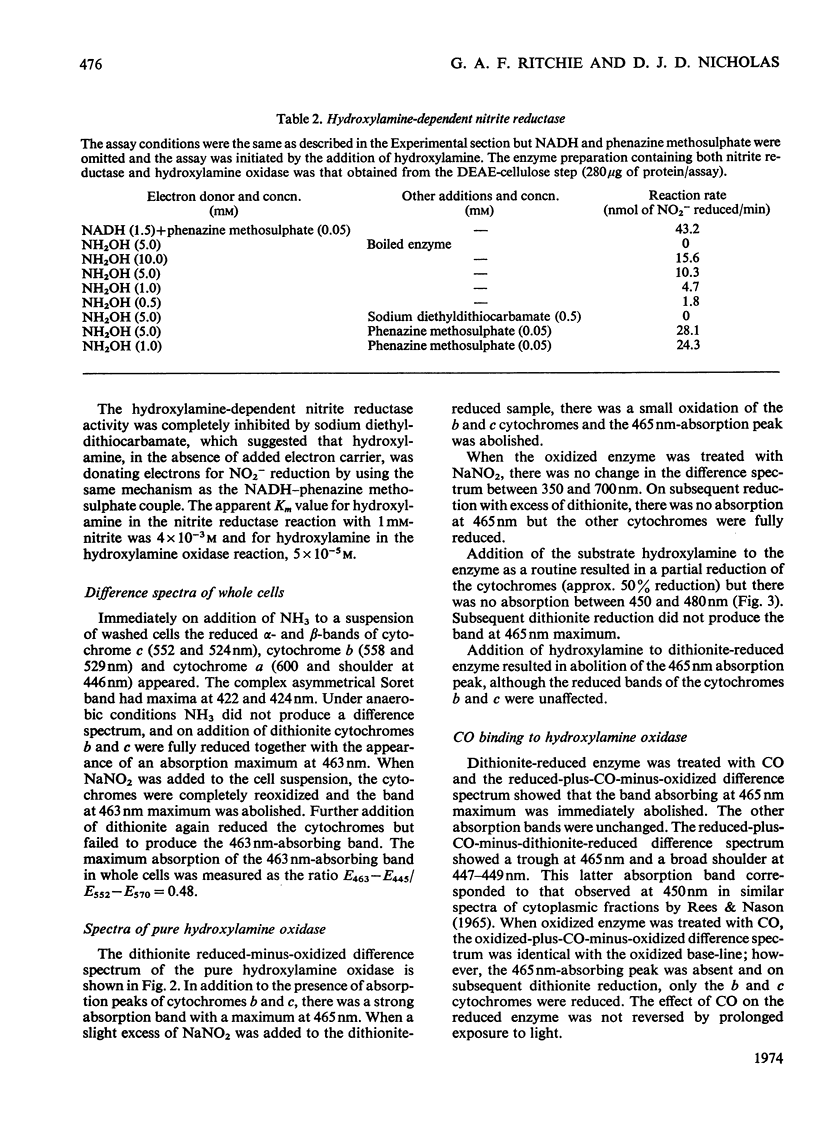
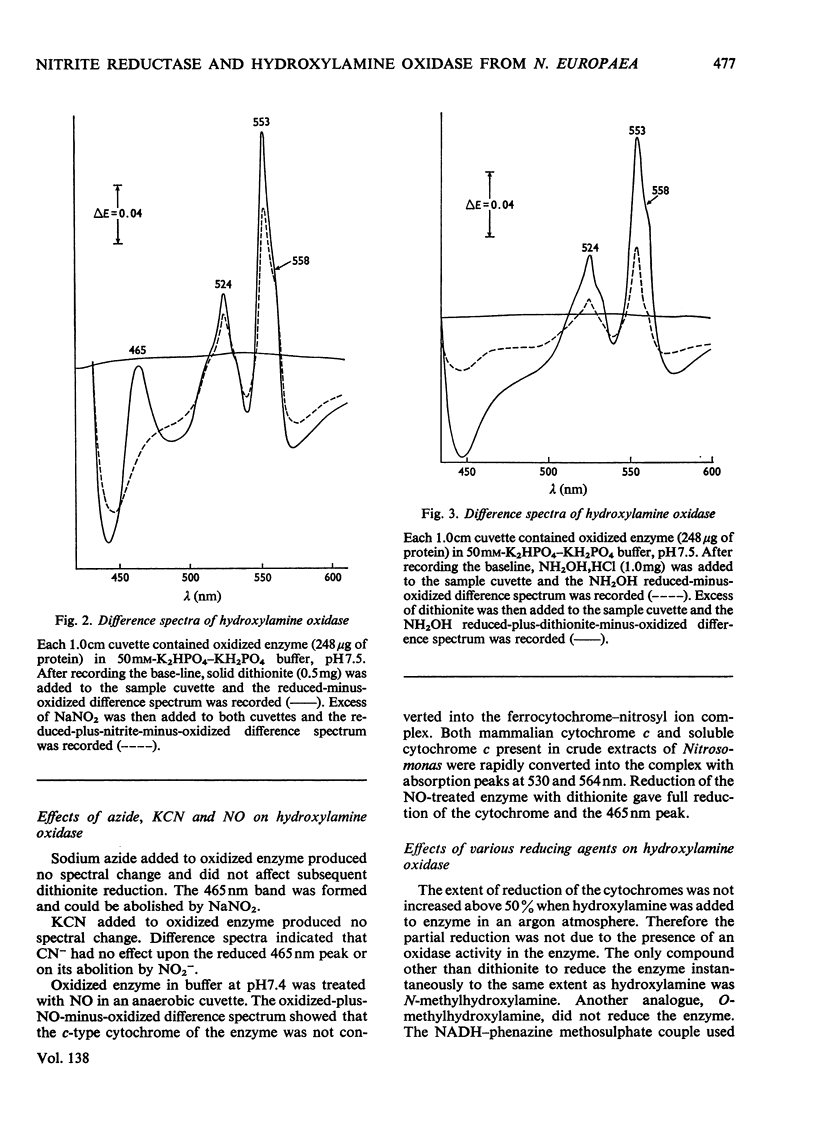
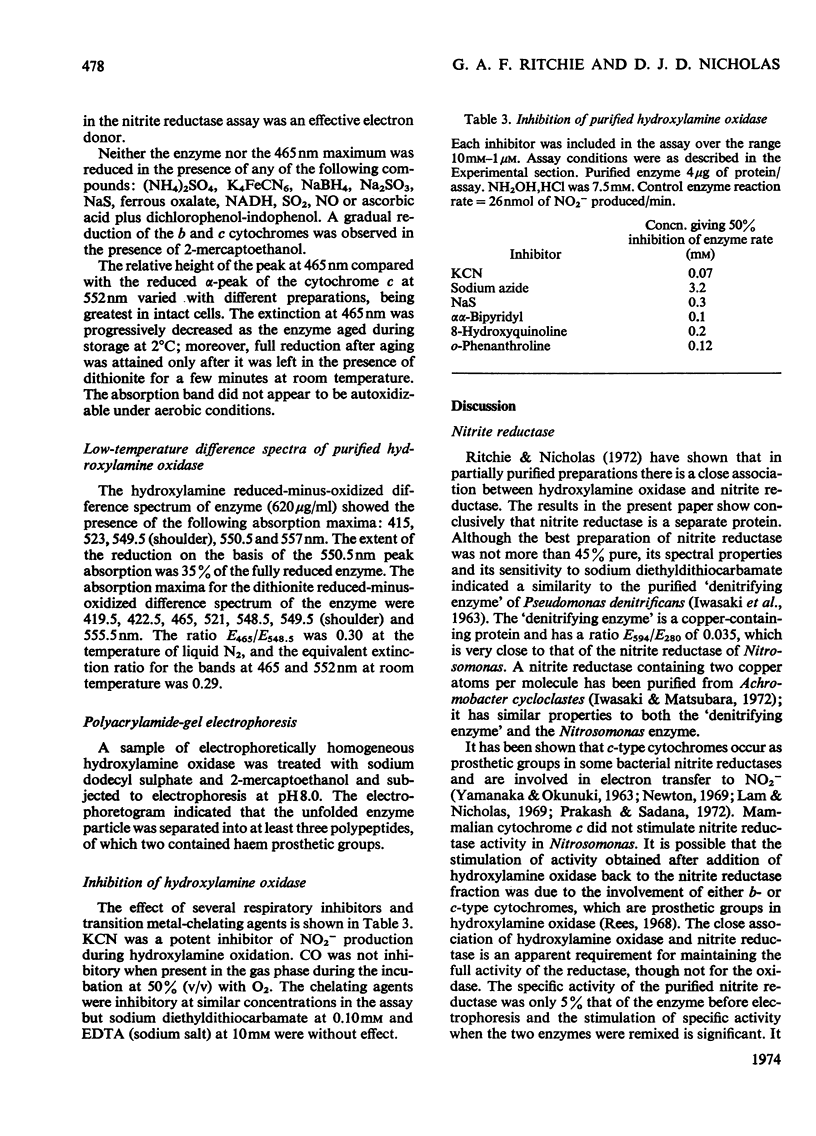
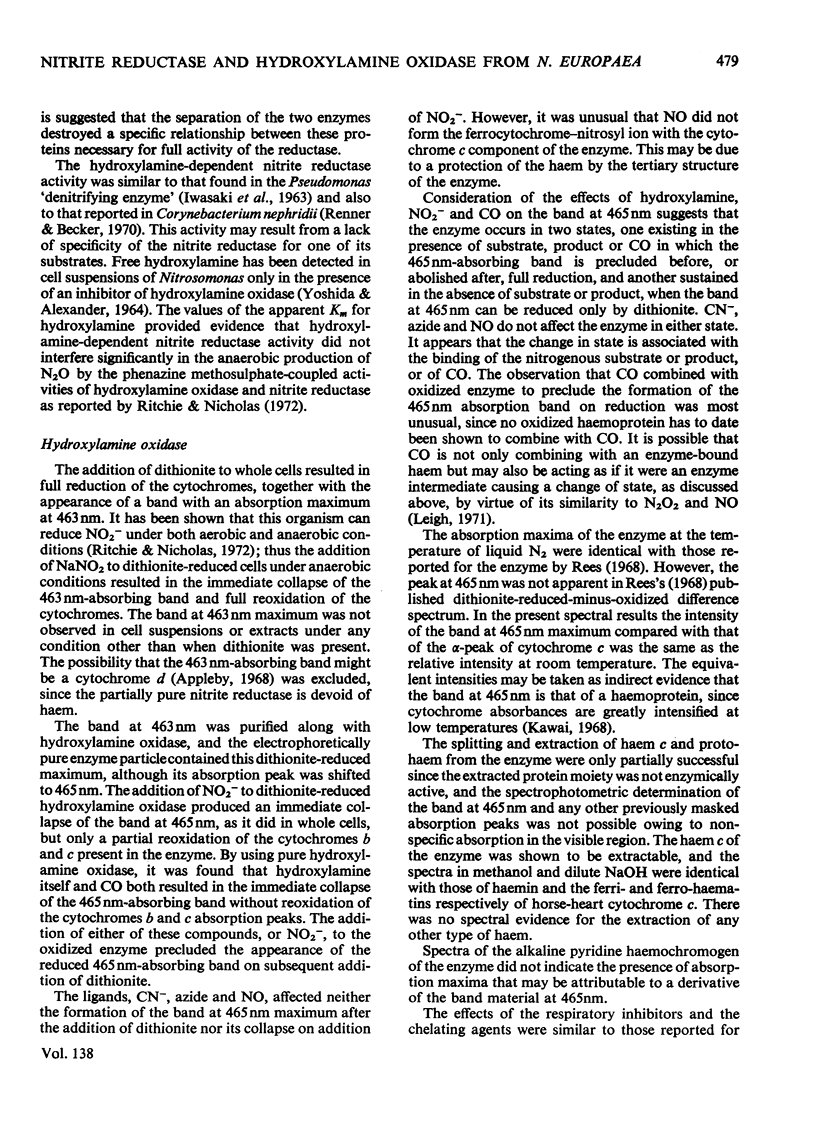
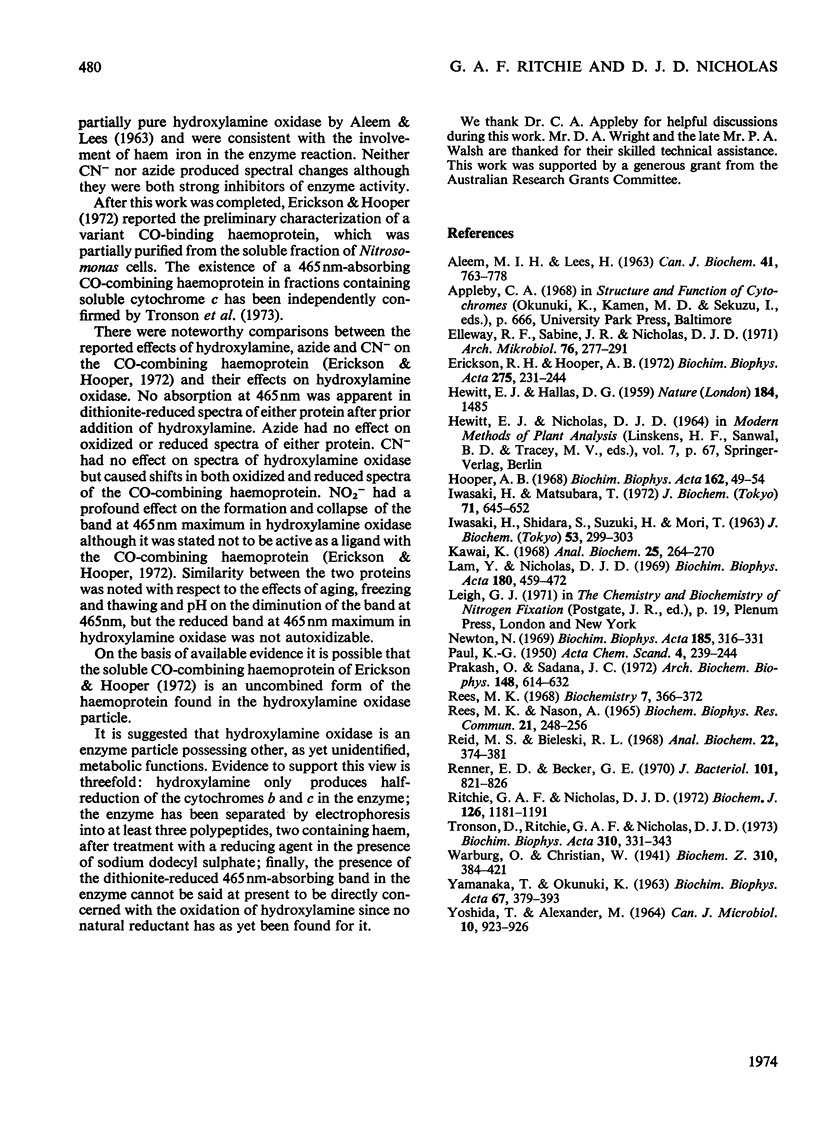
Selected References
These references are in PubMed. This may not be the complete list of references from this article.
- ALEEM M. I., LEES H. Autotrophic enzyme systems. I. Electron transport systems concerned with hydroxylamine oxidation in Nitrosomonas. Can J Biochem Physiol. 1963 Mar;41:763–778. [PubMed] [Google Scholar]
- Elleway R. F., Sabine J. R., Nicholas D. J. Acetylene reduction by rumen microflora. Arch Mikrobiol. 1971;76(4):277–291. doi: 10.1007/BF00408525. [DOI] [PubMed] [Google Scholar]
- Erickson R. H., Hooper A. B. Preliminary characterization of a variant co-binding heme protein from Nitrosomonas. Biochim Biophys Acta. 1972 Aug 17;275(2):231–244. doi: 10.1016/0005-2728(72)90044-8. [DOI] [PubMed] [Google Scholar]
- HEWITT E. J., HALLAS D. G. Measurement of inhibition by azide in biochemical assay systems involving nitrite estimation by diazotization. Nature. 1959 Nov 7;184(Suppl 19):1485–1485. doi: 10.1038/1841485a0. [DOI] [PubMed] [Google Scholar]
- Hooper A. B. A nitrite-reducing enzyme from Nitrosomonas europaea. Preliminary characterization with hydroxylamine ad electron donor. Biochim Biophys Acta. 1968 Jul 16;162(1):49–65. doi: 10.1016/0005-2728(68)90213-2. [DOI] [PubMed] [Google Scholar]
- IWASAKI H., SHIDARA S., SUZUKI H., MOR T. Studies on denitrification. VII. Further purification and properties of denitrifying enzyme. J Biochem. 1963 Apr;53:299–303. [PubMed] [Google Scholar]
- Iwasaki H., Matsubara T. A nitrite reductase from Achromobacter cycloclastes. J Biochem. 1972 Apr;71(4):645–652. [PubMed] [Google Scholar]
- Kawai K. Low-temperature apparatus for spectrophotometry of biological materials. Anal Biochem. 1968 Oct 24;25(1):264–270. doi: 10.1016/0003-2697(68)90101-2. [DOI] [PubMed] [Google Scholar]
- Lam Y., Nicholas D. J. A nitrite reductase with cytochrome oxidase activity from Micrococcus denitrificans. Biochim Biophys Acta. 1969 Aug 5;180(3):459–472. doi: 10.1016/0005-2728(69)90025-5. [DOI] [PubMed] [Google Scholar]
- Newton N. The two-haem nitrite reductase of Micrococcus denitrificans. Biochim Biophys Acta. 1969;185(2):316–331. doi: 10.1016/0005-2744(69)90425-2. [DOI] [PubMed] [Google Scholar]
- Prakash O. M., Sadana J. C. Purification, characterization and properties of nitrite reductase of Achromobacter fischeri. Arch Biochem Biophys. 1972 Feb;148(2):614–632. doi: 10.1016/0003-9861(72)90181-6. [DOI] [PubMed] [Google Scholar]
- Rees M. K. Studies on the hydroxylamine metabolism of Nitrosomonas europaea. II. Molecular properties of the electron-transport particle, hydroxylamine oxidase. Biochemistry. 1968 Jan;7(1):366–372. doi: 10.1021/bi00841a046. [DOI] [PubMed] [Google Scholar]
- Rees M., Nason A. A P-450-like cytochrome and a soluble terminal oxidase identified as cytochrome o from Nitrosomonas europaea. Biochem Biophys Res Commun. 1965 Nov 8;21(3):248–256. doi: 10.1016/0006-291x(65)90279-2. [DOI] [PubMed] [Google Scholar]
- Reid M. S., Bieleski R. L. A simple apparatus for vertical flat-sheet polyacrylamide gel electrophoresis. Anal Biochem. 1968 Mar;22(3):374–381. doi: 10.1016/0003-2697(68)90278-9. [DOI] [PubMed] [Google Scholar]
- Renner E. D., Becker G. E. Production of nitric oxide and nitrous oxide during denitrification by Corynebacterium nephridii. J Bacteriol. 1970 Mar;101(3):821–826. doi: 10.1128/jb.101.3.821-826.1970. [DOI] [PMC free article] [PubMed] [Google Scholar]
- Ritchie G. A., Nicholas D. J. Identification of the sources of nitrous oxide produced by oxidative and reductive processes in Nitrosomonas europaea. Biochem J. 1972 Mar;126(5):1181–1191. doi: 10.1042/bj1261181. [DOI] [PMC free article] [PubMed] [Google Scholar]
- Tronson D. A., Ritchie G. A., Nicholas D. J. Purification of c-type cytochromes from Nitrosomonas europaea. Biochim Biophys Acta. 1973 Jun 15;310(2):331–343. doi: 10.1016/0005-2795(73)90113-x. [DOI] [PubMed] [Google Scholar]
- YAMANAKA T., OKUNUKI K. Crystalline Pseudomonas cytochrome oxidase. I. Enzymic properties with special reference to the biological specificity. Biochim Biophys Acta. 1963 Mar 12;67:379–393. doi: 10.1016/0006-3002(63)91844-4. [DOI] [PubMed] [Google Scholar]
- YOSHIDA T., ALEXANDER M. HYDROXYLAMINE FORMATION BY NITROSOMONAS EUROPAEA. Can J Microbiol. 1964 Dec;10:923–926. doi: 10.1139/m64-121. [DOI] [PubMed] [Google Scholar]


